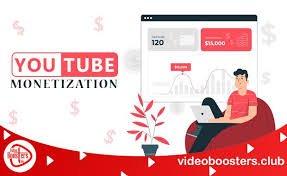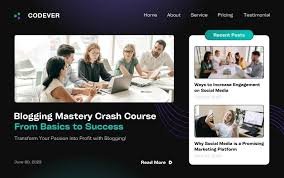How to Craft a Winning Content Strategy for Your Website or Blog
In the ever-evolving world of digital marketing, a solid content strategy is crucial to driving traffic, engaging your audience, and ultimately achieving your business goals. Whether you’re a blogger, small business owner, or digital marketer, developing a content strategy that aligns with your goals and resonates with your audience is essential for success. In this blog post, we’ll break down the steps to craft a winning content strategy for your website or blog that will drive results in 2025. With the right approach, you’ll be able to create valuable, relevant, and consistent content that enhances your brand’s visibility and performance. 1. Define Your Goals and Objectives The first step in crafting a content strategy is to define clear and measurable goals. What do you want your content to achieve? Without specific objectives, it will be difficult to measure your success and adjust your strategy as needed. Your goals might include: Once you’ve identified your goals, prioritize them based on your business needs. These objectives will serve as the foundation for your content strategy, helping guide decisions on content creation, distribution, and promotion. 2. Understand Your Target Audience A successful content strategy requires a deep understanding of your target audience. Knowing who you’re creating content for allows you to craft material that resonates with their needs, preferences, and pain points. To get to know your audience better, consider: One way to gather insights is by conducting surveys, analyzing social media interactions, and reviewing analytics from your website or blog. Tools like Google Analytics, Facebook Insights, and surveys can help you gather valuable data. 3. Perform a Content Audit If you’ve already been creating content, performing a content audit is a necessary step before moving forward with your strategy. A content audit involves reviewing your existing content to identify what has performed well, what hasn’t, and where there are gaps in your content offerings. During your content audit, look for: By conducting a content audit, you’ll gain a better understanding of what’s working and what’s not, allowing you to optimize your content moving forward. 4. Keyword Research and SEO Optimization In 2025, SEO is still one of the most powerful ways to drive organic traffic to your website or blog. Without SEO, even the most well-crafted content can go unnoticed by search engines and potential readers. Start by conducting keyword research to identify the terms and phrases your audience is searching for. Use tools like Google Keyword Planner, SEMrush, and Ahrefs to find high-volume keywords related to your niche. When selecting keywords, consider: Incorporate your keywords naturally into your content, focusing on your title, meta descriptions, headers, and body text. Optimizing for SEO will help your content rank higher in search results and attract organic traffic. 5. Create a Content Calendar A content calendar is an essential tool for organizing and planning your content over the long term. It helps you stay consistent and ensures you’re covering a variety of topics that align with your goals and audience’s needs. When creating a content calendar: By planning your content in advance, you’ll be able to produce content more efficiently and ensure you’re consistently providing value to your audience. 6. Choose the Right Content Formats Content comes in many forms, and each type has its own advantages. To make your content strategy successful, it’s essential to use a mix of content formats to engage your audience and keep them coming back for more. Some popular content formats include: Experiment with different content types to see which formats resonate most with your audience. Combining several types of content will help keep your strategy dynamic and versatile. 7. Measure, Analyze, and Adjust Once your content is live, it’s crucial to monitor its performance and make adjustments as needed. Use analytics tools like Google Analytics and social media insights to track key metrics such as traffic, engagement, bounce rate, and conversion rates. Here are some important performance indicators (KPIs) to track: Based on these insights, adjust your content strategy accordingly. If certain types of content are performing well, create more of them. If others are falling flat, analyze why and make improvements. Conclusion Crafting a winning content strategy for your website or blog in 2025 requires careful planning, execution, and ongoing analysis. By defining clear goals, understanding your audience, conducting thorough research, and optimizing your content for SEO, you’ll be able to create a content strategy that drives traffic, boosts engagement, and supports your business objectives. Start implementing these strategies today, and watch your website or blog grow into a powerful content hub that attracts and engages your audience. Related Tags:




















